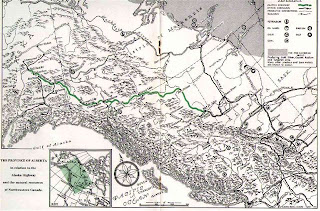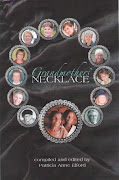In 1941, months after I was born, my father took a job with Curran and Briggs, a paving and construction company with the first Canadian contract to work on the construction of the Alaska Highway. My father made that decision without consulting my mother, so she was very angry he was going off for a year, leaving her with a newborn baby and a rooming house to manage in downtown Toronto. From his point of view, it was an opportunity to work at his trade as a welder and earn a lot of money. After finishing a welding course at night school, he’d found it difficult to obtain work in his trade in the 1930s and continued to work in the restaurant business out of necessity. He first heard about the job from a friend, Fred Caruk, who owned Master Welding in Port Credit, just west of Toronto. When Dad was offered a chance to work as welder maintaining all machinery and equipment for this paving company, he saw it as a great chance and a bit of an adventure. It also gave him a way of contributing to the war effort.
 |
| Jack Zaryski Pulling Welding Machine for Curran & Briggs c. 1942 |
An Alaska Highway had been proposed and debated in the 1930s, but it wasn’t until fear of a Japanese invasion via Siberia and the Japanese bombing of Pearl Harbour in 1941, that such a road, as a supply route, was thought to be essential for the defence of North America. On February 11, 1942 President Roosevelt officially authorized work to begin by the United States Army Engineer Troops.
According to family lore, my father was already in Alaska by September 1941. He travelled by train from Union Station in Toronto to Edmonton and from there to Dawson Creek, BC. Over the year he would travel with his firm as they advanced construction from Dawson Creek to the highway's middle point. Others were working from Fairbanks, east to the middle point at around Watson Lake.
 |
| Route of Alaska Highway Govt. of Alberta |
 |
| Jack Zaryski aka. Johnny the Welder |
While Dad was in Alaska, Mom would tell me stories about him and read his letters to me. After about a year my dad came home for a two month visit when I was about 18 months old. I have no recollection of his visit in October 1942, only the family story that I cried and clung to him in Union Station when he boarded the train to return.
The highway officially opened November 1942, though improvements continued to be made for months and years later. Dad worked in Alaska for another 4 months before coming home for good in about February 1943, just before I turned two years old.
 |
| Alaska Highway Dawson Creek, B.C. c. 1940s |
Copyright © 2010, Ruth Zaryski Jackson






4 comments:
Ruth,
If you consider the distances your father travelled to make a better life for himself, and later your family, it tallies up to a lot of mileage.
How wonderful that you have these significant historical photos of his contribution to the Alaska highway. The conditions were deplorable and shows a lot of sacrifice on his part. In may ways his absence is the same as most men who went to war and left behind wives who had to show their strength and resourcefulness to keep the family together.
Your family account of his return and the disappointment of a business failure and the dashed hopes of your mother trying to shed the boardinghouse existence says a lot about forgiveness.
Stories of the immigrant experience are important to remind us of how Canada became the country it is today.
Mary,
Thank you for your thoughtful comments. It's easy to judge events of the past when we forget to put things in historical context. Sometimes the stories that are handed down are severed from context so as writers we must restore that meaning and let the events speak for themselves.
War veterans often chose to keep silent about their stories and the impact of war on their being and that of their families. Immigrant stories too are often intertwined with the horrors of war.
When I read about the determination and resourcefulness of earlier generations, I gasp in admiration.
Thank you for contributing to History. I'm the grandson of Fred Briggs. Beautiful blog and story.
Thank you for commenting on my story and your kind words. I appreciate it very much.
I'm sure you have lots of family stories about building the Alaska Highway too!
Post a Comment